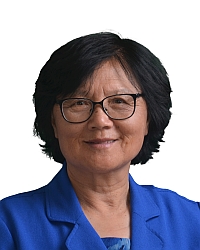TR2011-078
Unified Spectral Efficiency Analysis of Cellular Systems with Channel-Aware Schedulers
-
- , "Unified Spectral Efficiency Analysis of Cellular Systems with Channel-Aware Schedulers", IEEE Transactions on Communications, DOI: 10.1109/TCOMM.2011.11071.100510, Vol. 59, No. 12, pp. 3463-3474, November 2011.BibTeX TR2011-078 PDF
- @article{Wu2011nov,
- author = {Wu, J. and Mehta, N.B. and Molisch, A.F. and Zhang, J.},
- title = {{Unified Spectral Efficiency Analysis of Cellular Systems with Channel-Aware Schedulers}},
- journal = {IEEE Transactions on Communications},
- year = 2011,
- volume = 59,
- number = 12,
- pages = {3463--3474},
- month = nov,
- doi = {10.1109/TCOMM.2011.11071.100510},
- url = {https://www.merl.com/publications/TR2011-078}
- }
- , "Unified Spectral Efficiency Analysis of Cellular Systems with Channel-Aware Schedulers", IEEE Transactions on Communications, DOI: 10.1109/TCOMM.2011.11071.100510, Vol. 59, No. 12, pp. 3463-3474, November 2011.
-
MERL Contact:
-
Research Area:
Abstract:
Spectral efficiency is a key characteristic of cellular communications systems, as it quantifies how well the scarce spectrum resource is utilized. It is influenced by the scheduling algorithm as well as the signal and interference statistics, which in turn depend on the propagation characteristics. In this paper we derive analytical expressions for the short-term and long-term channel-averaged spectral efficiencies of the round robin, greedy Max-SINR, and proportional fair schedulers, which are popular and cover a wide range of system performance and fairness trade-offs. A unified spectral efficiency analysis is developed to highlight the differences among these schedulers. Unlike previous work in the literature, the analysis is notably different in the following aspects: (i) it does not assume the co-channel interferer to be identically distributed, as is typical in realistic cellular layouts, (ii) it avoids the loose spectral efficiency bounds used in the literature, which only considered the worst case and best case locations of identical co-channel interferer, (iii) it explicitly includes the effect of multi-tier interferer in the cellular layout and uses a more accurate model for handling the total co-channel interference, and (iv) it captures the impact of using small modulation constellation sizes, which are typical of second and third-generation cellular standards. The analytical results are verified using extensive Monte Carlo simulations.
Related News & Events
-
NEWS IEEE Transactions on Communications: publication by Jinyun Zhang and others Date: November 23, 2011
Where: IEEE Transactions on Communications
MERL Contact: Jinyun Zhang
Research Area: CommunicationsBrief- The article "Unified Spectral Efficiency Analysis of Cellular Systems with Channel-Aware Schedulers" by Wu, J., Mehta, N.B., Molisch, A.F. and Zhang, J. was published in IEEE Transactions on Communications.
